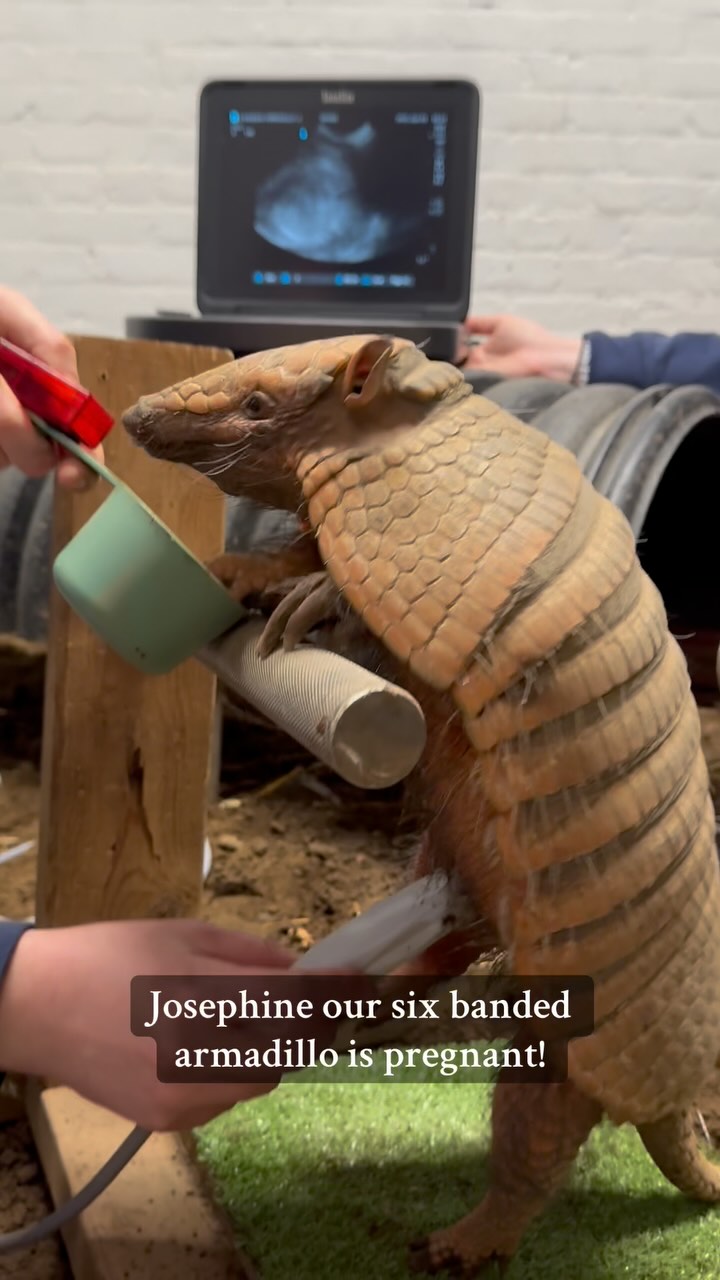- An overview of the announcement made on social media regarding a special event involving wildlife.
- The significance of breeding programs in zoos and their contribution to wildlife conservation.
- The role of zoology and animal behavior in successful captivity breeding and raising animals.
- Conservation challenges and the importance of raising awareness and engagement through such announcements.
- Insights into zoo management strategies employed to foster healthy environments for animal breeding.
The recent announcement with the phrase “This is kind of a big dillo… we’re having a baby!” shared on social media, particularly Instagram, has sparked excitement and curiosity among wildlife enthusiasts and conservationists. Though seemingly whimsical, it carries a weighty message about the significance of breeding programs in zoos and how they contribute significantly to wildlife conservation. This revelation highlights the essential roles zoos play in species preservation and raises awareness and interest in wildlife conservation efforts.
Breeding programs in zoos serve as vital components in wildlife conservation, addressing the challenges of biodiversity loss due to habitat fragmentation, climate change, and human encroachment. Zoos act as modern conservation sanctuaries where scientists and caretakers focus on breeding species that face the threat of extinction. By creating stable breeding populations outside their natural habitats, these programs can reintroduce species into the wild once their native environments are restored or stabilized.
The announcement of new animal births within zoos, like the viral “we’re having a baby” proclamation, serves as both a celebratory moment and an educational opportunity. It underscores the rigorous scientific processes and careful planning that underpin breeding programs. Collaborative efforts among zoo staff, veterinarians, and researchers are critical to maintaining genetic diversity and understanding complex animal behaviors in captivity. The professional stewardship inherent in these processes reaffirms the significant role of zoology—a field dedicated to the study of animals, their behavior, and their interactions within ecosystems.
Animal behavior study and knowledge are fundamental aspects of zoology that contribute to successful breeding campaigns. By observing and understanding the specific needs, behaviors, and environmental conditions favorable for reproduction, zoo staff can tailor habitats and care practices to maximize reproductive success. This involves a meticulous analysis of factors such as diet, social structures, and natural mating rituals. For many species, replicating their native environment as closely as possible in captivity can both improve their well-being and enhance breeding outcomes, which is why announcements of successful breeding events like this one are celebrated.
Such social media posts not only celebrate zoo achievements but also play a crucial role in conservation awareness efforts. Public engagement through these platforms is pivotal in garnering support for conservation programs and encouraging responsible environmental stewardship. By sharing successes, zoos can inspire a global audience to consider their role in preserving biodiversity and support scientific research aimed at protecting endangered species. These interactions help bridge the gap between the scientific community and the public, transforming abstract conservation concepts into tangible examples of progress.
Managing a zoo environment to support breeding programs involves a myriad of strategies and operational decisions. Zoo management teams must ensure enclosures meet the physical and psychological needs of the animals. They must balance visitor engagement with creating safe, enriching spaces for animals to live and breed comfortably. This requires an intricate understanding of species-specific needs and a commitment to continuous learning and adaptation. Effective zoo management is rooted in evidence-based strategies that align with the latest scientific research.
The baby announcement and similar communications are microcosms of broader conservation initiatives. They highlight ongoing efforts to educate the public, engage interest in environmental issues, and showcase the vital role zoos play in species conservation. By fostering a connection between people and wildlife, such announcements stimulate a wider appreciation for the natural world and motivate conservation action.
Through continued dedication to these programs, zoos contribute to the protection and preservation of wildlife heritage. As we become increasingly aware of the threats facing biodiversity, these announcements remind us of the successes possible through informed and organized conservation efforts. Each birth celebrated by the phrase “This is kind of a big dillo… we’re having a baby!” signifies a step forward in the journey of species preservation.
*****
Source Description
This is kind of a big dillo… we’re having a baby! 🥰


